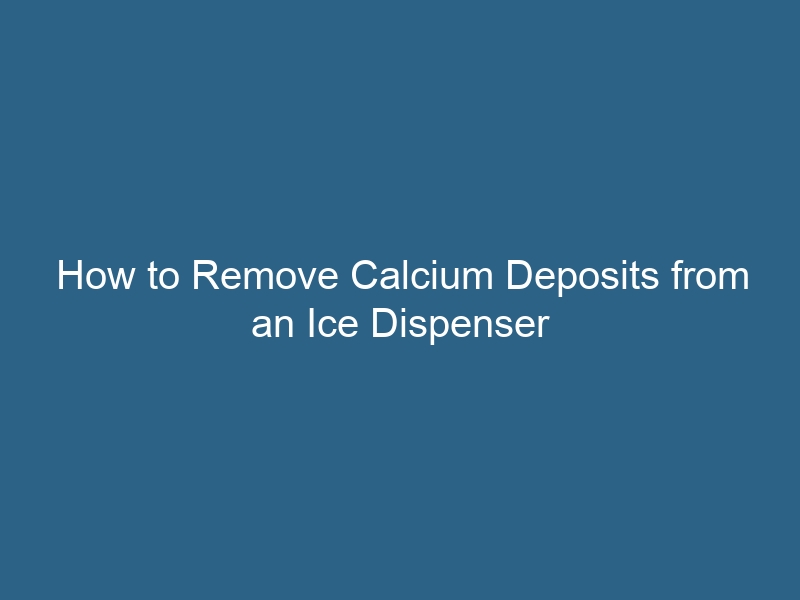Quck answer
To remove calcium deposits from an ice dispenser, follow these steps:
1. Mix equal parts vinegar and water in a spray bottle.
2. Spray the mixture onto the calcium deposits on the ice dispenser.
3. Let the mixture sit for a few minutes to loosen the deposits.
4. Use a soft brush or sponge to scrub away the deposits.
5. Rinse the dispenser with clean water.
6. Dry the dispenser thoroughly to prevent further deposits.
Regular maintenance and cleaning can help prevent calcium deposits from building up on the ice dispenser.
An ice dispenser is a modern invention that has a significant impact on our lives. Having a constant supply of fresh ice can feel like a small luxury in our daily routine. However, over time, an ice dispenser can become dirty and develop calcium deposits. These deposits not only make the machine look unsightly but can also affect the taste, quality, and supply of ice. To restore your machine, it is important to clean the calcium buildup from the refrigerator and ice dispenser.
Calcium Buildup in Ice Machines
All water contains dissolved minerals and deposits, which can vary depending on the location and water supply. This can lead to a problem of intense calcium buildup in some areas. Although consuming these mineral deposits is generally safe, the buildup can cause harm to areas where water is collected and stored over time.
Ice machines are particularly susceptible to calcium and magnesium deposits. As water flows through the machine, these minerals can accumulate in certain areas, similar to the scale found inside a kettle. While a small amount of buildup is acceptable, excessive deposits can negatively impact the machine and the quality of ice it produces.
Identifying Calcium Buildup in Refrigerators
In some cases, mineral buildup can be visible to the naked eye. If you notice a white or green flaky substance on any part of your ice machine, it is likely a sign of calcium buildup that needs to be addressed.
However, in other instances, the mineral buildup may occur inside the mechanism, making it less noticeable. If mineral deposits get trapped inside a small tube, they can block it and reduce water flow. Over time, the buildup can completely clog the pipes.
If you observe smaller or misshapen ice cubes, a decrease in ice production, or a complete lack of ice from your dispenser, it is likely that scale buildup is the cause. Additionally, cloudy ice cubes can also indicate a mineral buildup issue. Fortunately, you can easily tackle this problem at home.
Removing Calcium Deposits from Ice Dispensers
Commercial descalers are available for purchase to address mineral buildup. However, these products can be harsh and potentially damage the ice machine. Additionally, using such chemicals in an area where ice is produced may raise concerns about food safety if accidentally consumed.
If you prefer a safer alternative, Cooking Light suggests using a simple solution of white vinegar and water. Start by unplugging your refrigerator. Then, prepare a 50-50 solution of vinegar and water and apply it to the ice machine using a washcloth.
Next, Thor Kitchen recommends using an old toothbrush dipped in baking soda to scrub the visible areas with scale. The baking soda will help remove any remaining buildup. Rinse the machine thoroughly with water to eliminate any lingering flavors. Dry the machine, reassemble it, and plug your refrigerator back in.
Preventing Scale in Ice Dispensers
After removing the buildup, it is important to maintain your ice machine to prevent scale formation. Coast Distributors recommends changing your water filter at least once every 12 months, and ideally every six months. This will help prevent minerals from entering the ice machine and causing scale buildup.


